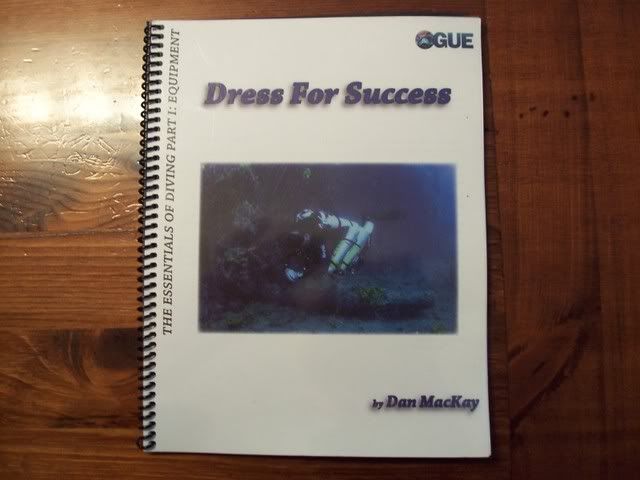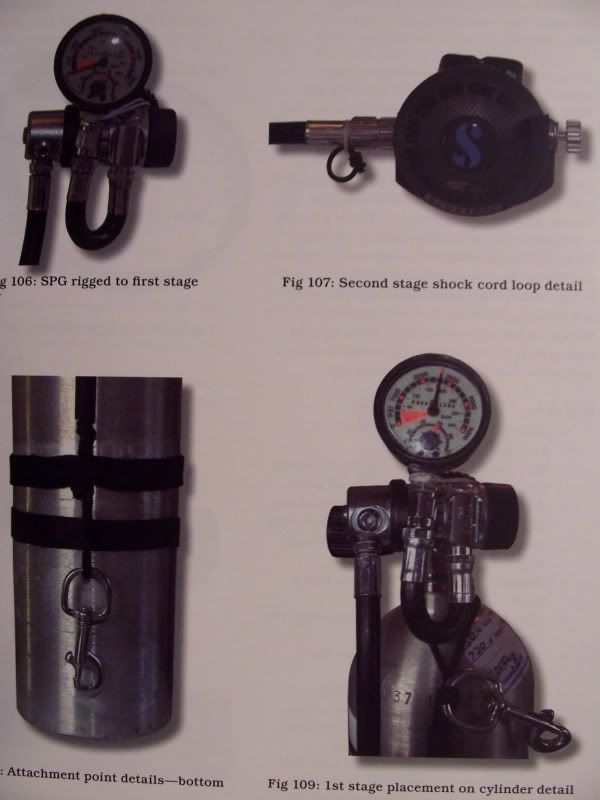DaleC
Contributor
Dress For Success (The essentials of diving part:1 Equipment) by Dan MacKay
Publisher: Discover History LLC 2004
ISBN: 1-929401-03-5

Dan MacKay is a GUE instructor who has put together this excellent reference guide for DIR equipment configuration. Good quality photos and easy to understand instruction/explanations lead the reader through the basic set up of their kit and the reasoning behind certain choices. Even if one is not a DIR practitioner there is plenty to study and digest here. The topics include:
What is DIR?
Exposure System
Backplate-Harness
BCD
Regulators
Fins
Manifolds
Bands
Masks
Tank Assembly
Ancillary Equipment
Lighting Systems
Stages/Deco Bottles
Final Thoughts
An example of the photo detailing (a photgraph of the book, the actual pics are much clearer):

The book itself is spiral bound and was a bit pricey at $35Can. but I consider it a worthwhile investment to my diving library. It has already made the rounds from diver to diver in our little group. It can probably be sourced through most DIR/GUE oriented dive shops or on line via GUE.com
Publisher: Discover History LLC 2004
ISBN: 1-929401-03-5

Dan MacKay is a GUE instructor who has put together this excellent reference guide for DIR equipment configuration. Good quality photos and easy to understand instruction/explanations lead the reader through the basic set up of their kit and the reasoning behind certain choices. Even if one is not a DIR practitioner there is plenty to study and digest here. The topics include:
What is DIR?
Exposure System
Backplate-Harness
BCD
Regulators
Fins
Manifolds
Bands
Masks
Tank Assembly
Ancillary Equipment
Lighting Systems
Stages/Deco Bottles
Final Thoughts
An example of the photo detailing (a photgraph of the book, the actual pics are much clearer):

The book itself is spiral bound and was a bit pricey at $35Can. but I consider it a worthwhile investment to my diving library. It has already made the rounds from diver to diver in our little group. It can probably be sourced through most DIR/GUE oriented dive shops or on line via GUE.com
Last edited:




